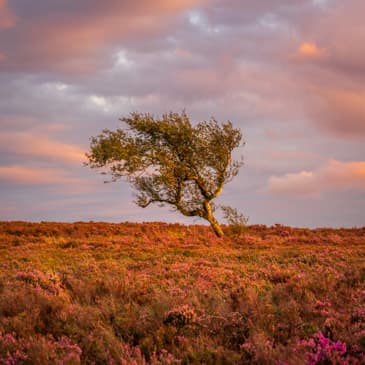Stourhead in Autumn
Stourhead is a landscape garden in Wiltshire owned by the National Trust. It’s design was the brainchild of Henry Hoare II who wanted to create a living work of art by arranging trees and architectural features around a grand lake. Imagine a garden design from the Chelsea Flower Show — then increase it in size by a few thousand acres and you’ll get the idea.
It’s a location I’ve always wanted to photograph after seeing a photograph like the one at the top of this article. But it’s a long journey (about a 4hr drive). And because it’s the most popular National Trust location in England, I knew I wouldn’t be able to photograph it free of people. But a friend drew my attention to a National Trust initiative that allowed photographers early morning access to the site in Autumn, so I thought it was time to make the trip.
Hoare Photographers
Apple iPhone 17 Pro at 6.8 mm (35 mm equivalent: 24.0 mm). 1/110s at f/1.8, ISO 100.
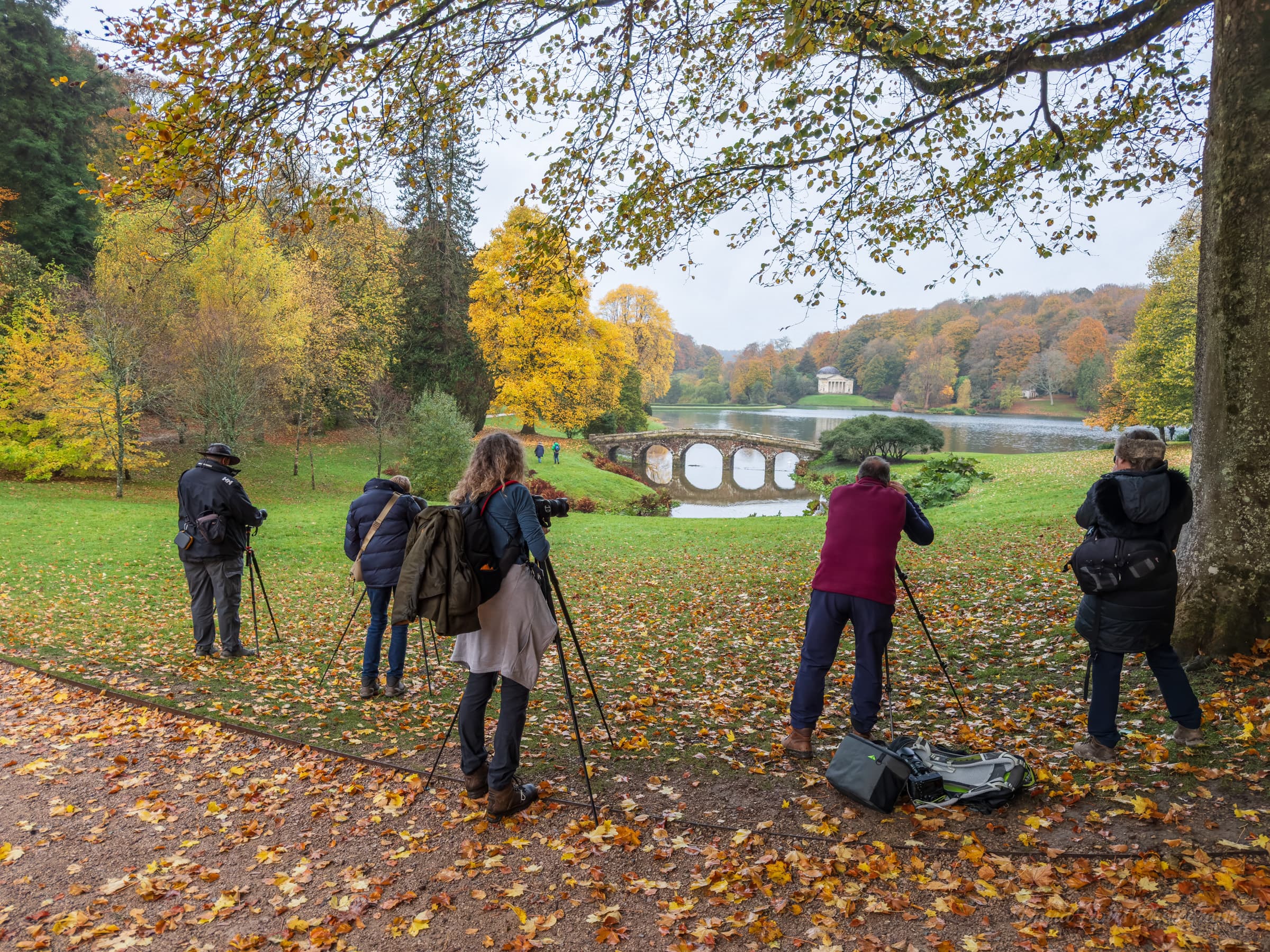
There are a few spots around Stourhead where it’s obvious Henry Hoare II wanted people to stand and admire his work. Unsurprisingly, that’s where many photographers congregate. It reminded me of a trip I made to the EPCOT centre about 40 years ago. Disney had placed little signs telling you where to stand to give you a photogenic view of icons like Spaceship Earth. Kodak sponsored imaging across the parks, so these spots were called “Kodak Picture Spots”. They were an early form of “designed viewpoint,” the sort of thing you now see filtered through influencers and Instagram. Rather than a “Kodak Picture Spot”, what we have here is a “Henry Hoare spot” (a “Hoare Spot” for short, and a phrase you should probably avoid in nice company).
The Pantheon from Palladian Bridge
OM Digital Solutions OM-1 Mark II and Olympus 12-40mm F2.8 at 30.0 mm (35 mm equivalent: 60.0 mm). 1/4s at f/5.6, ISO 200.
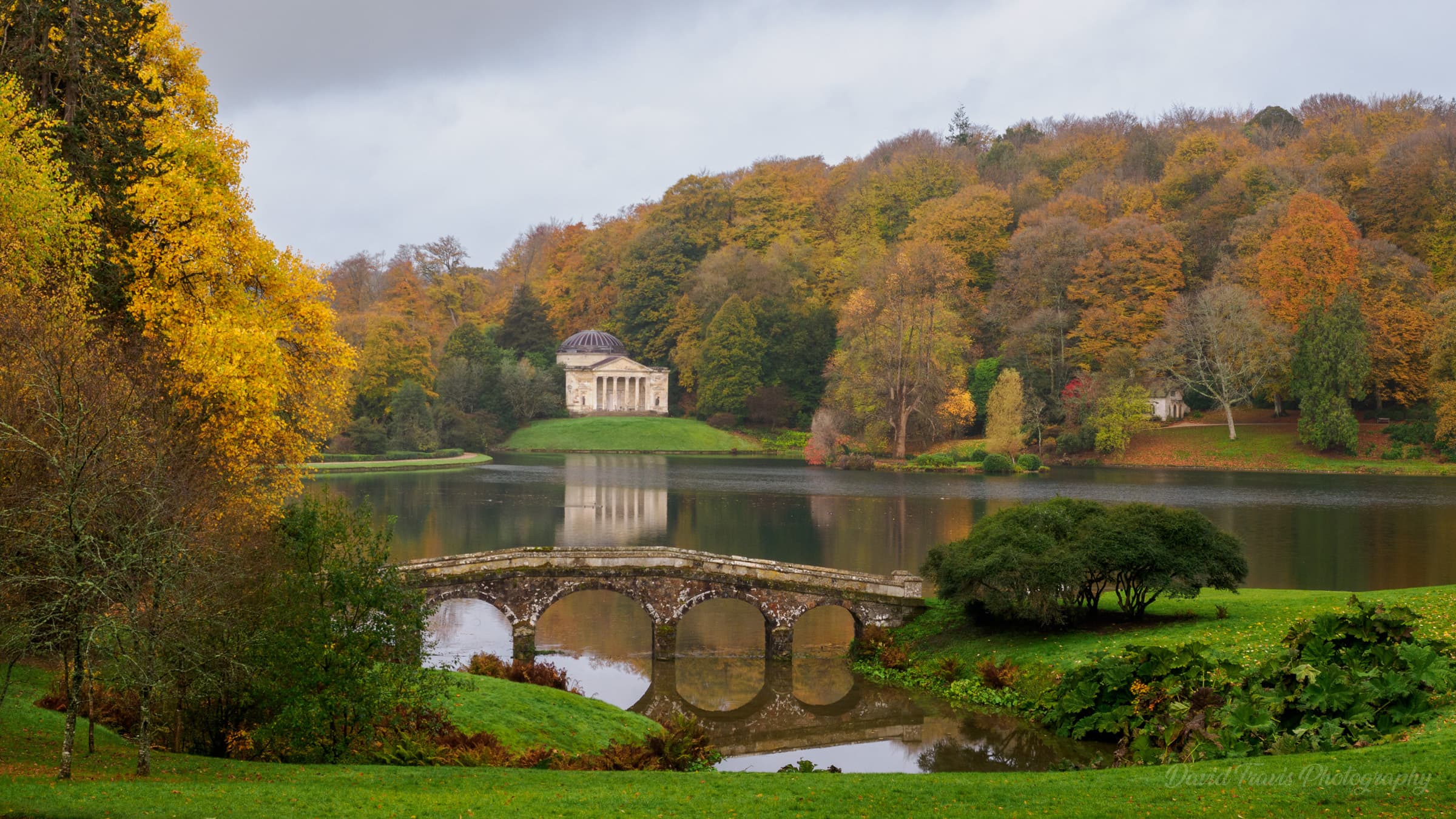
Stourhead is so photogenic, and so “designed”, it's almost too perfect. Natural landscapes usually have some dereliction like fallen trees and crumbling buildings. I wonder if a landscape needs those signs of imperfection to feel authentic?
Autumn leaves at Stourhead
OM Digital Solutions OM-1 Mark II and Olympus M.40-150mm F2.8 at 95.0 mm (35 mm equivalent: 190.0 mm). 1/160s at f/2.8, ISO 200.
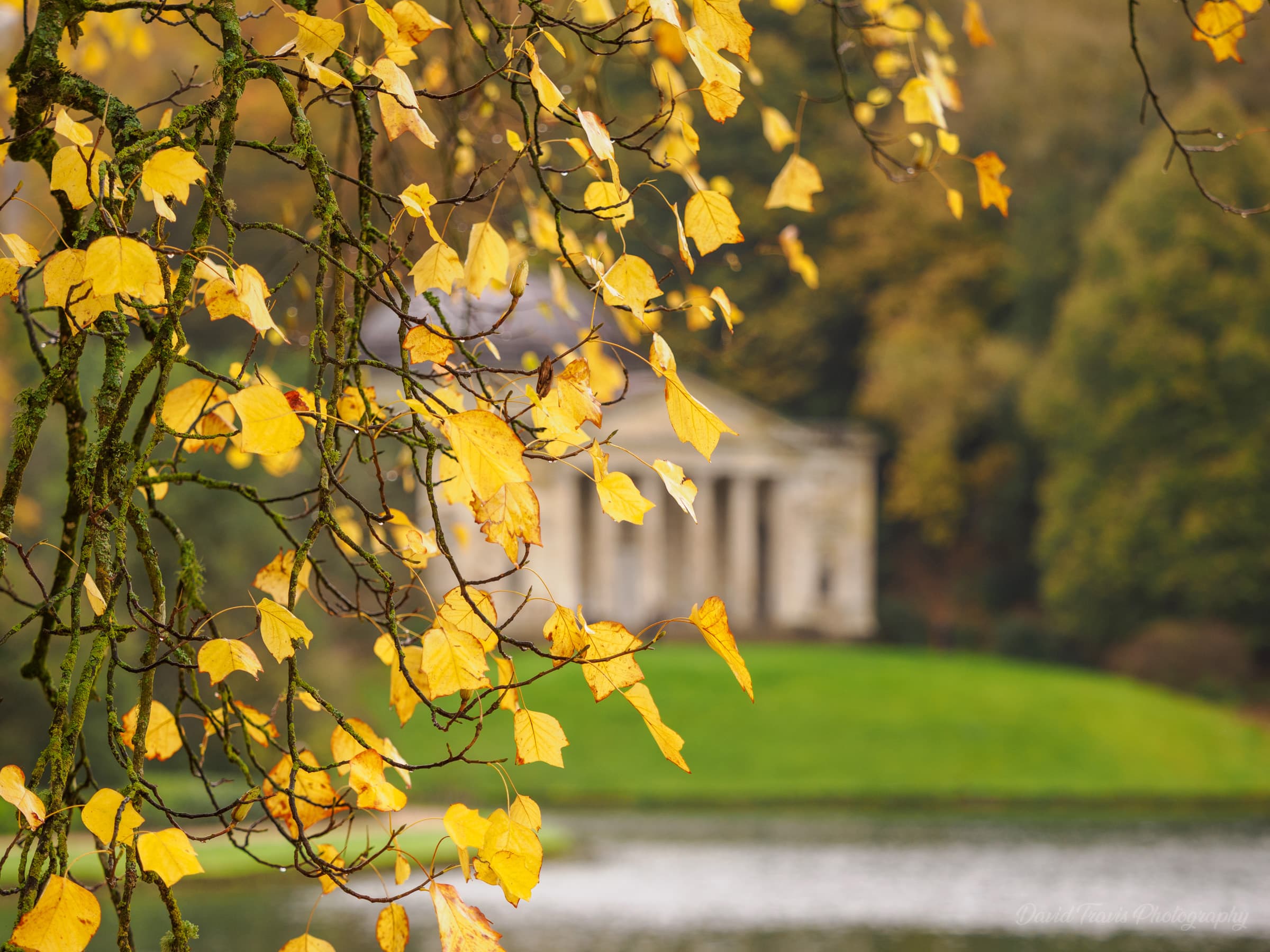
This isn’t the most picturesque view of the garden, but I liked the way the view provides a clear sense of place (with the Pantheon in the background) but grounded in the autumn season. It’s also a different view of Stourhead. My approach was to photograph from the likely Hoare Spots, but to aim to find at least some views that were unique.
The Pantheon through an aperture
OM Digital Solutions OM-1 Mark II and Olympus M.40-150mm F2.8 at 79.0 mm (35 mm equivalent: 158.0 mm). 1/8s at f/8.0, ISO 200.
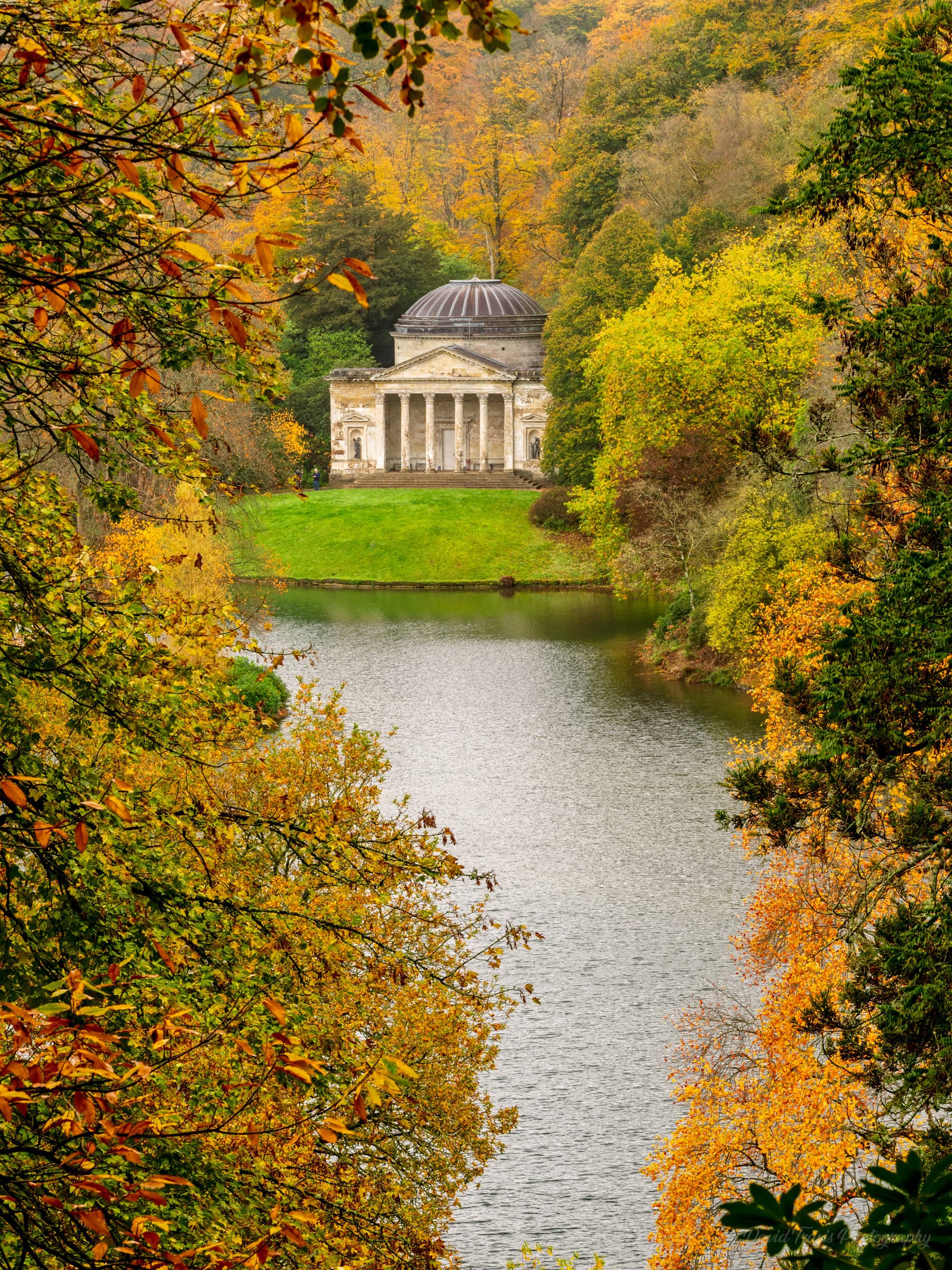
The trees have obviously grown considerably since they were planted by Henry Hoare II and his descendants (and especially by his grandson, Sir Richard Hoare, who apparently did much of the tree planting). So this view must have been very different back in the 18th and 19th centuries. I liked the way that the autumn trees provide a frame around the building.
I did try some longer exposures to make the lake completely still, but these didn’t work: there was a persistent drizzle that caused water droplets to form on my lens and filters, and I kept fighting wind shake on the long exposure.
The Temple of Apollo
OM Digital Solutions OM-1 Mark II and Olympus 12-40mm F2.8 at 31.0 mm (35 mm equivalent: 62.0 mm). 60s at f/5.6, ISO 200.
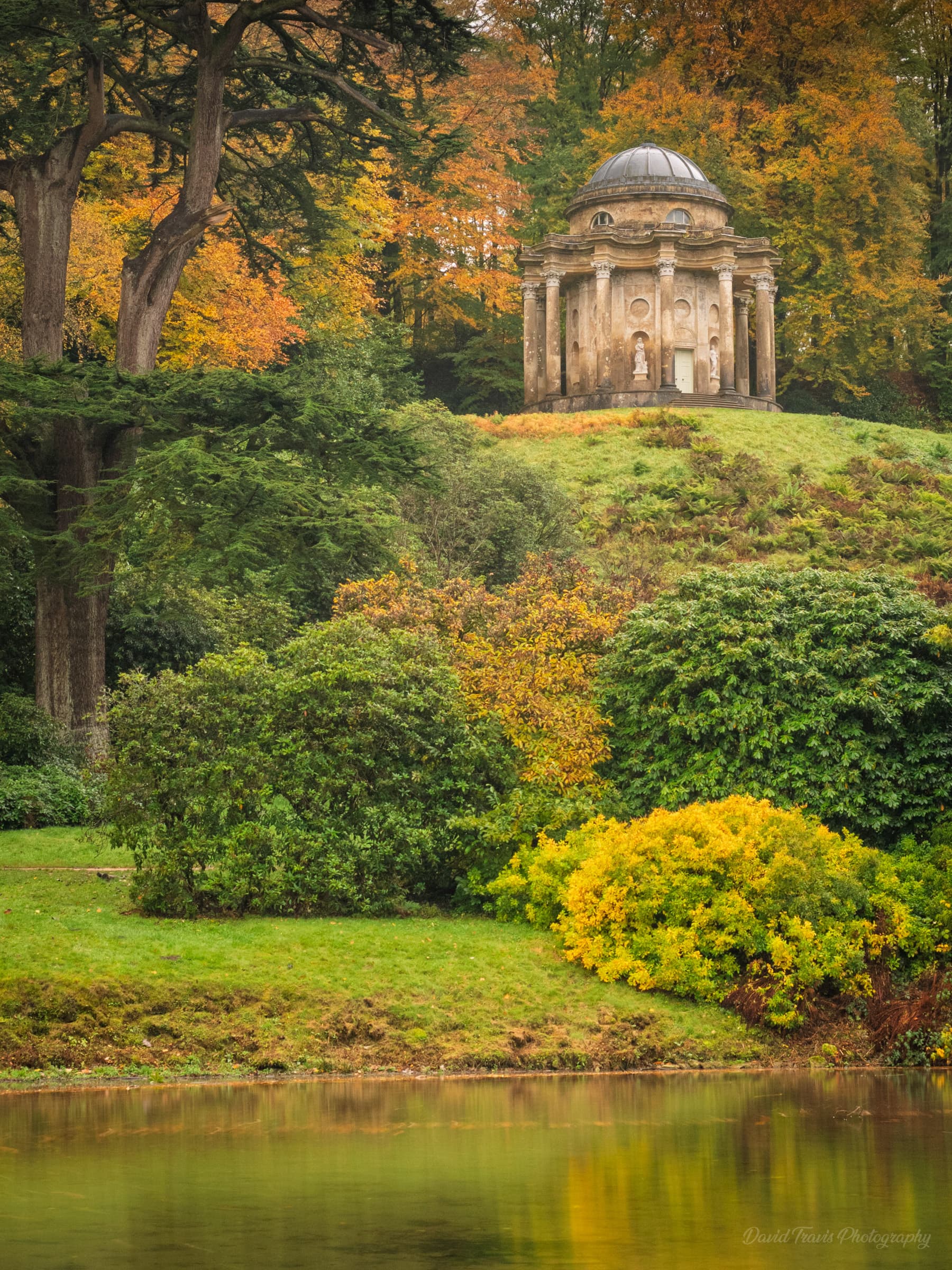
On a hill overlooking the gardens sits the Temple of Apollo, one of a number of temples inspired by scenes of the Grand Tour of Europe. It did look pretty fantastic framed in the autumn foliage.
Temple of Apollo in Autumn
Apple iPhone 17 Pro at 16.9 mm (35 mm equivalent: 100.0 mm). 1/120s at f/2.8, ISO 200.
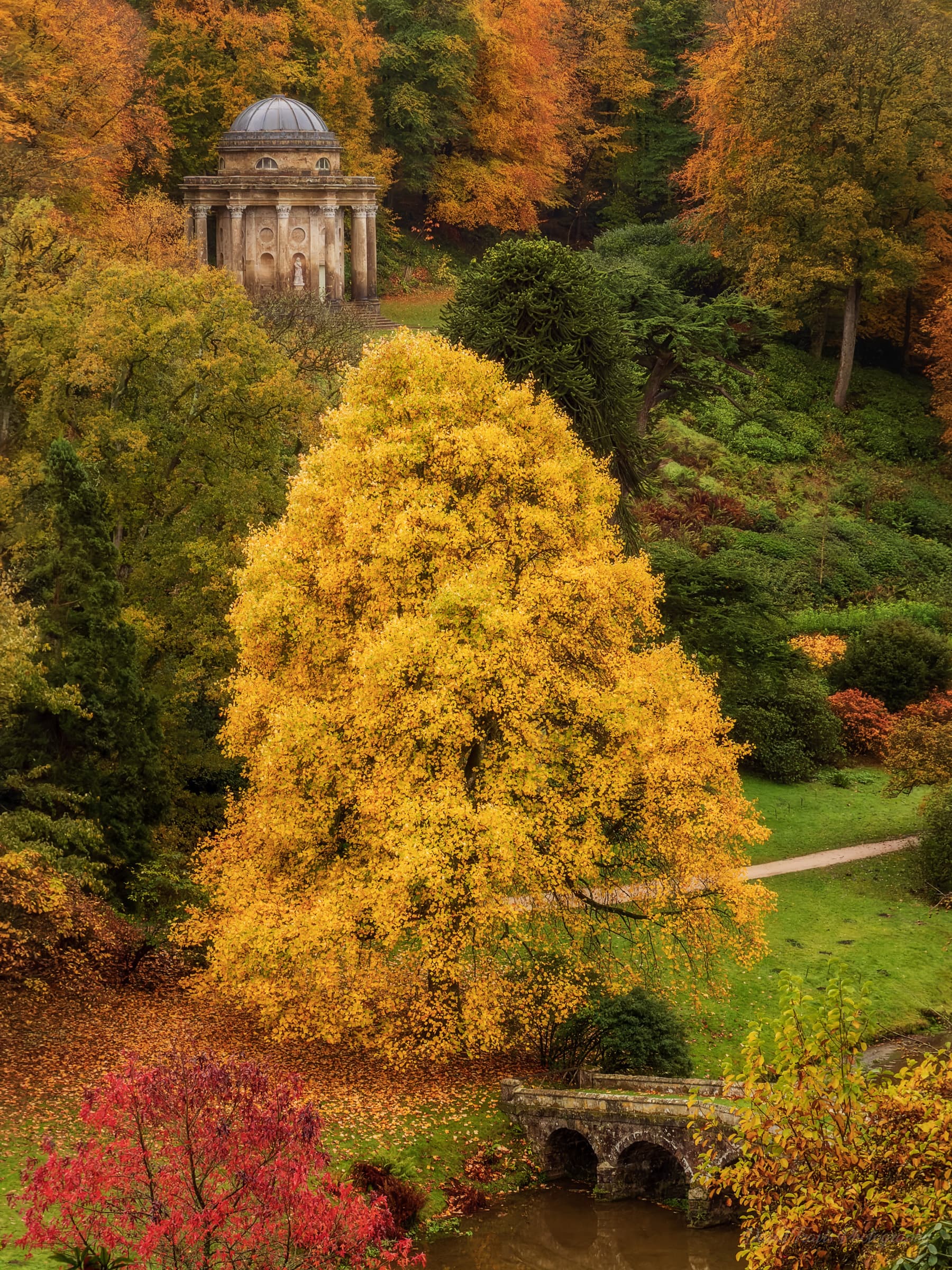
This shows a view of the Temple of Apollo from a higher vantage point. As an aside, I took this picture with my phone and was surprised by the quality. I took some similar compositions with both my phone and my camera so I could compare them afterwards. My camera still has the edge but it’s becoming a very thin edge these days.
Temple of Apollo nestled in trees
OM Digital Solutions OM-1 Mark II and Olympus M.40-150mm F2.8 at 62.0 mm (35 mm equivalent: 124.0 mm). 1/5s at f/8.0, ISO 200.

When I signed up for this event, I knew that it would be a gamble: peak autumn colour changes every year and you never know what kind of light and weather you will get. I think I chose the right time for autumn colour but it was a grey and overcast day so I never got the beautiful morning light that this location deserves.
The Temple of Flora
OM Digital Solutions OM-1 Mark II and Olympus M.40-150mm F2.8 at 150.0 mm (35 mm equivalent: 300.0 mm). 1/10s at f/5.6, ISO 200.
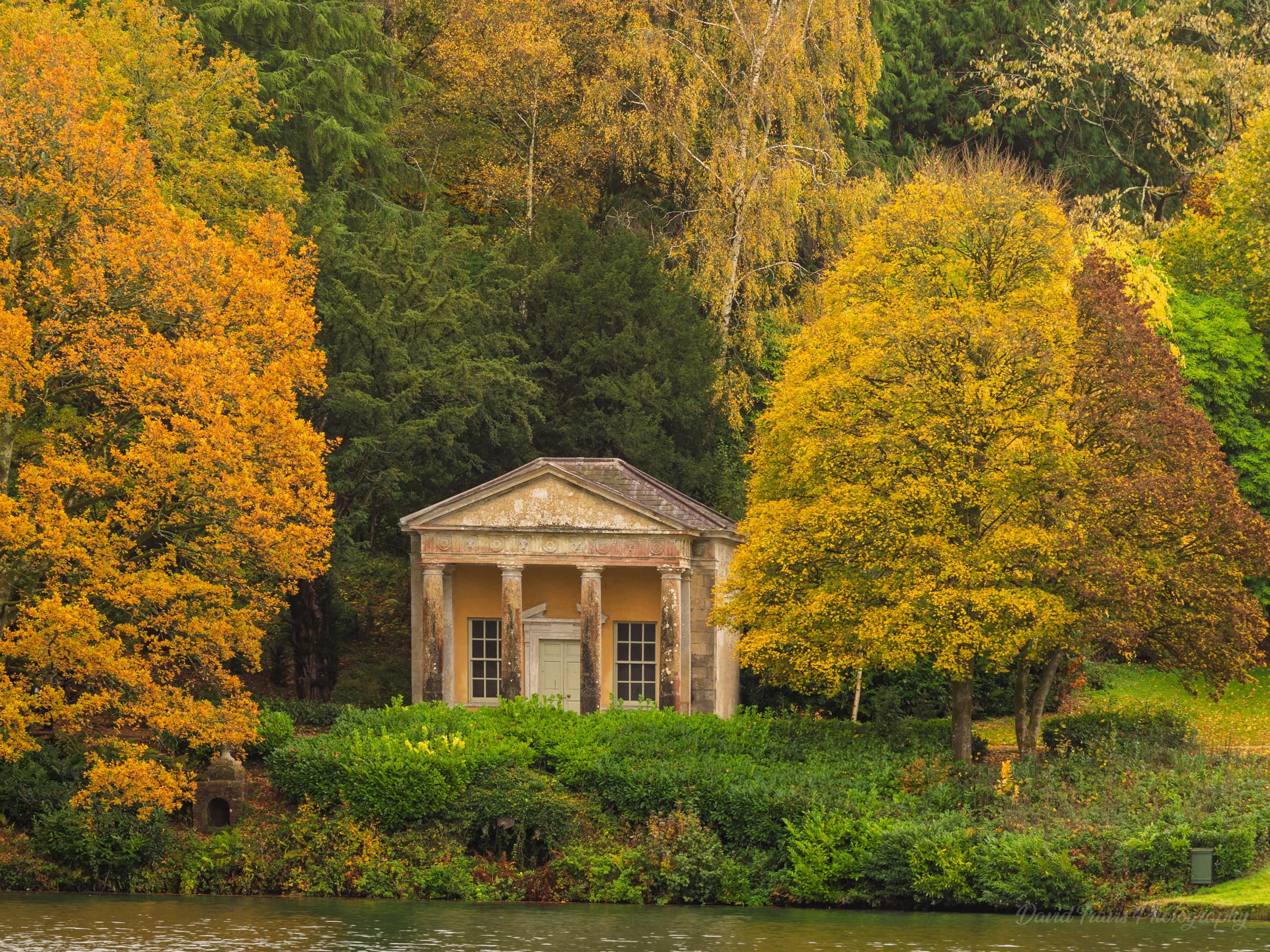
This is a view taken near the Pantheon, looking back over the lake to the Temple of Flora. Wherever you look at Stourhead you find these photogenic structures nestled in the landscape.
Gothic Cottage
OM Digital Solutions OM-1 Mark II and Olympus 12-40mm F2.8 at 12.0 mm (35 mm equivalent: 24.0 mm). 1/5s at f/8.0, ISO 200.
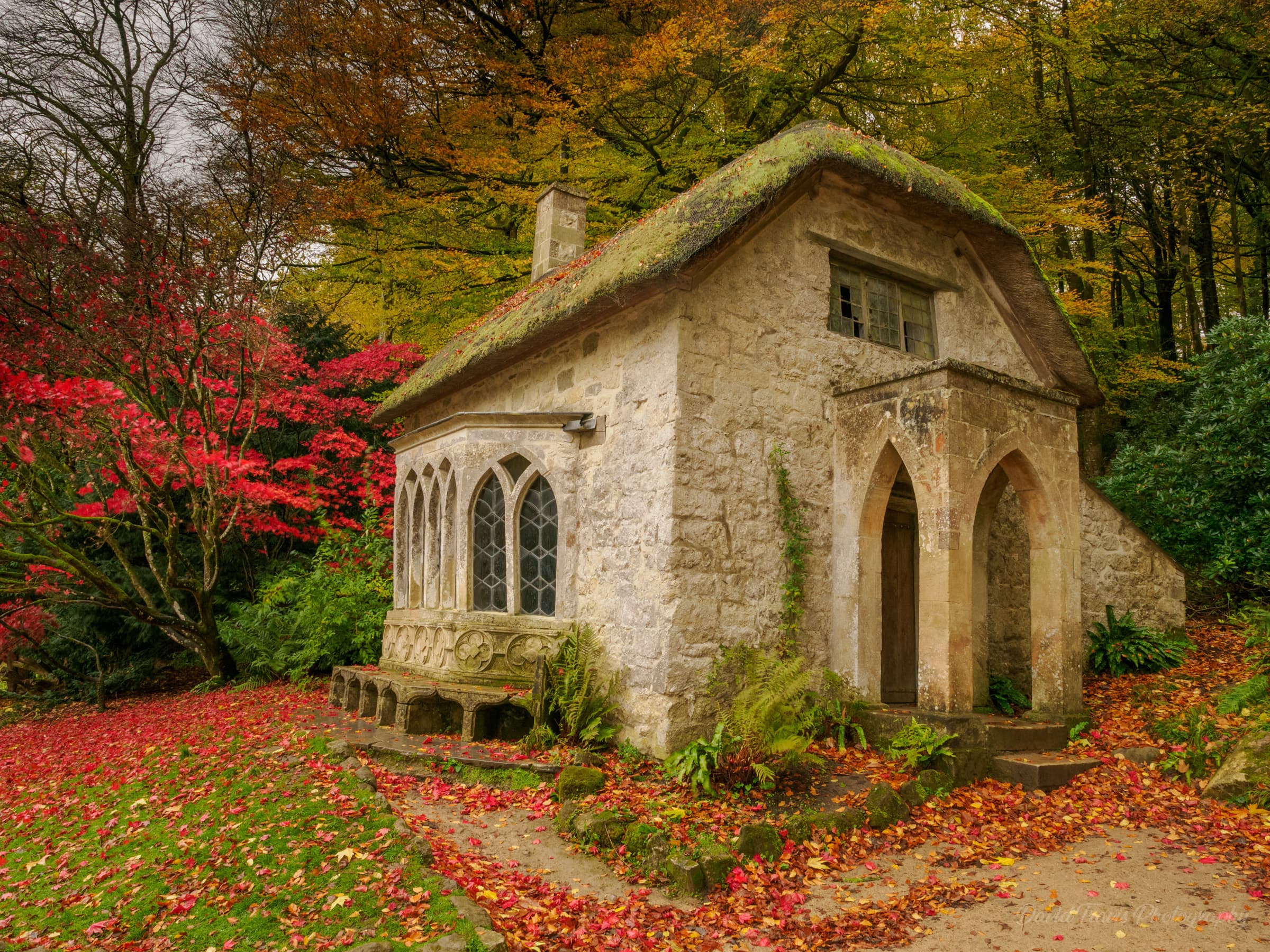
I’m not sure if this cottage was ever designed to be lived in or if it was simply designed to feature in paintings of Stourhead.
What I learnt
Overall, I’m pleased with the early morning access I got to the site. It meant that I could take my time with compositions without being worried about other visitors photo bombing my shot. What stuck with me is the peace and quiet — the experience of having the location almost to myself. But if I did it again, I think I would give myself an assignment to help me return with more unique photographs. For example, I’d like to challenge myself to return with a panel of images but force myself to include (say) the Pantheon in every shot: as the main subject, as a supporting subject, close up, reflected in a puddle etc. An assignment like that would push back against Henry Hoare's gentle manipulation — sometimes not so gentle — to view his landscape design from particular spots.


